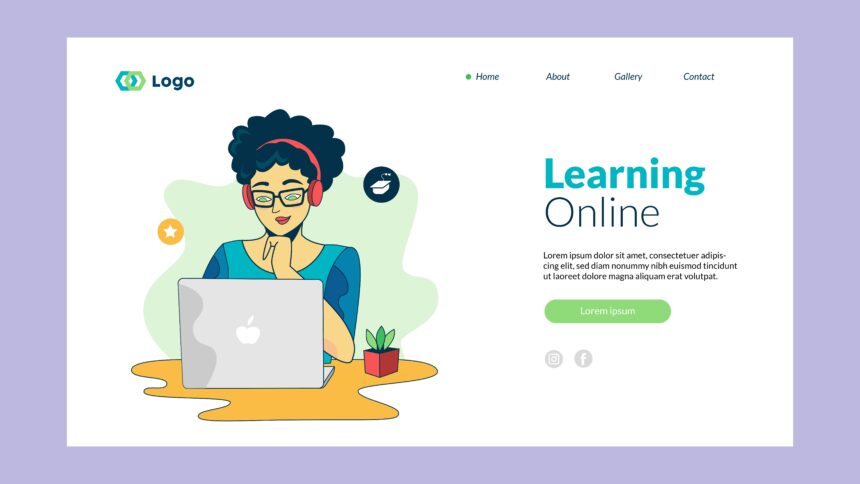Table of Contents
- The Evolution of Education: How Learning Has Transformed
- Flexibility & Convenience: Which Fits Your Lifestyle?
- Cost & Affordability: Comparing Expenses and Value
- Learning Styles & Engagement: Finding What Works for You
- Social Interaction & Networking: Building Connections
- Career Impact & Credibility: What Employers Value
- Accessibility & Inclusivity: Who Benefits Most?
- Hybrid Learning: The Best of Both Worlds?
- Final Verdict: Making the Right Choice for Your Future
- Next Steps: How to Get Started
1. The Evolution of Education: How Learning Has Transformed
Education is no longer confined to brick-and-mortar classrooms. With the rise of digital technology, online learning has become a powerful alternative to traditional education. But which one is right for you?
This guide will break down the key differences between online and traditional learning, helping you decide based on:
✔ Your schedule and lifestyle
✔ Budget and financial considerations
✔ Preferred learning style
✔ Career goals and industry demands
✔ Accessibility needs
By the end, you’ll have a clear roadmap for choosing the best educational path.
2. Flexibility & Convenience: Which Fits Your Lifestyle?
Online Learning: Study on Your Own Terms
✅ Pros:
- Learn anytime, anywhere—no rigid class schedules.
- Ideal for working professionals, parents, and travelers.
- Self-paced courses allow you to speed up or slow down as needed.
❌ Cons:
- Requires strong self-discipline to stay on track.
- Limited real-time interaction with instructors.
Traditional Learning: Structured and Timely
✅ Pros:
- Fixed schedules help combat procrastination.
- Immediate face-to-face support from teachers and peers.
❌ Cons:
- Inflexible for those with jobs or family commitments.
- Commuting can be time-consuming and expensive.
Which is Better for You?
➡ Choose Online Learning if you need flexibility.
➡ Choose Traditional Learning if you thrive in structured environments.
3. Cost & Affordability: Comparing Expenses and Value
Online Learning: Budget-Friendly Education
✅ Pros:
- Often cheaper than on-campus degrees (no facility fees).
- Save on commuting, housing, and physical textbooks.
- Many free or low-cost courses (Coursera, edX, Khan Academy).
❌ Cons:
- Some employers still favor traditional degrees.
- Hidden costs (tech requirements, proctored exams).
Traditional Learning: Higher Investment, More Resources
✅ Pros:
- Perceived as more prestigious by some employers.
- Access to campus facilities (libraries, labs, networking events).
❌ Cons:
- Tuition, accommodation, and transportation add up quickly.
- Less feasible for non-traditional students (working adults, parents).
Which is Better for You?
➡ Choose Online Learning if you want to save money.
➡ Choose Traditional Learning if you value campus resources.
4. Learning Styles & Engagement: Finding What Works for You
Online Learning: Digital and Interactive
✅ Pros:
- Multimedia content (videos, quizzes, simulations).
- AI-driven personalized learning paths.
- Replay lectures for better understanding.
❌ Cons:
- Less hands-on for lab-based subjects (medicine, engineering).
- Requires reliable internet and tech skills.

Traditional Learning: Hands-On and Immersive
✅ Pros:
- Better for kinesthetic learners (labs, workshops).
- Instant feedback from instructors.
❌ Cons:
- Passive learning in large lecture halls.
- Less customization for individual needs.
Which is Better for You?
➡ Choose Online Learning if you prefer digital interaction.
➡ Choose Traditional Learning if you need hands-on training.
5. Social Interaction & Networking: Building Connections
Online Learning: Virtual Connections
✅ Pros:
- Global networking with peers worldwide.
- Discussion forums, LinkedIn groups, and virtual meetups.
❌ Cons:
- Less personal than face-to-face interactions.
- Requires effort to build meaningful connections.
Traditional Learning: In-Person Community
✅ Pros:
- Stronger bonds with classmates and professors.
- Easier access to study groups and mentorship.
❌ Cons:
- Limited to local or campus-based networks.
Which is Better for You?
➡ Choose Online Learning if you want global connections.
➡ Choose Traditional Learning if you value in-person networking.
6. Career Impact & Credibility: What Employers Value
Online Learning: Growing Acceptance
✅ Pros:
- Many employers now recognize online certifications.
- Great for upskilling while working.
❌ Cons:
- Some fields (law, medicine) still prefer traditional degrees.
Traditional Learning: Established Credibility
✅ Pros:
- Historically trusted by employers.
- Strong alumni networks for job placements.
❌ Cons:
- May not offer the latest industry-specific skills.
Which is Better for You?
➡ Choose Online Learning for career flexibility.
➡ Choose Traditional Learning for regulated professions.
7. Accessibility & Inclusivity: Who Benefits Most?
Online Learning: Education for All
✅ Pros:
- Accessible for remote learners and people with disabilities.
- No geographical barriers.
❌ Cons:
- Requires tech access, which may exclude some.
Traditional Learning: Limited Reach
✅ Pros:
- Better for those needing in-person support.
❌ Cons:
- Excludes those who can’t relocate or commute.
Which is Better for You?
➡ Choose Online Learning if accessibility is a priority.
➡ Choose Traditional Learning if you need physical support.
8. Hybrid Learning: The Best of Both Worlds?
Many institutions now offer blended learning, combining online flexibility with in-person interaction. This could be the perfect middle ground if you:
✔ Want some structure but also need flexibility.
✔ Benefit from hands-on training but prefer digital resources.
✔ Need networking opportunities without daily commutes.
9. Final Verdict: Making the Right Choice for Your Future
| Factor | Best for Online Learning | Best for Traditional Learning |
|---|---|---|
| Flexibility | Busy professionals, parents | Students who need structure |
| Cost | Budget-conscious learners | Those who can invest in campus life |
| Learning Style | Self-motivated, tech-savvy learners | Hands-on, social learners |
| Networking | Global connections | Local, in-person networking |
| Career Goals | Skill-based, remote jobs | Traditional professions (law, medicine) |
| Accessibility | Remote learners, disabilities | Those near educational institutions |
10. Next Steps: How to Get Started
- Try a free online course (Coursera, Udemy, Khan Academy).
- Visit local colleges if considering traditional education.
- Explore hybrid programs for a balanced approach.
Final Thought
There’s no one-size-fits-all answer. Your ideal learning method depends on your schedule, budget, career goals, and personal preferences.
Online learning offers flexibility and affordability, while traditional learning provides structure and hands-on experience. Assess your needs and choose the path that aligns with your future success!
